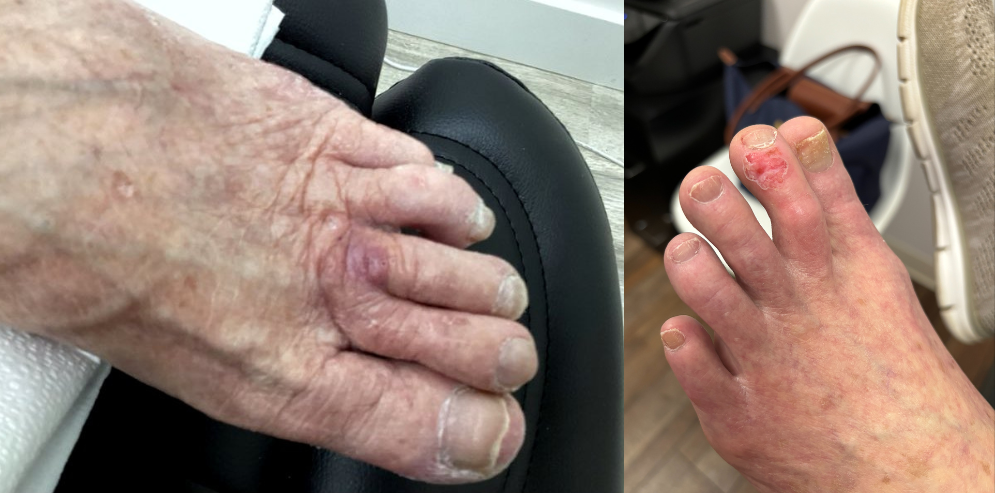
Fibroepithelioma of Pinkus is a rare variant of basal cell skin cancer, which is the most common form of non-melanoma skin cancer. This particular tumor is found more frequently on adult women and often resembles other benign skin tumors. Let’s explore Fibroepithelioma of Pinkus treatment options and more.
Fibroepithelioma of Pinkus Dermoscopy
Basal cell skin cancer accounts for a majority of non-melanoma skin cancer diagnoses, but within this wide umbrella, there are many subforms that can transpire. Fibroepithelioma of Pinkus is an extremely rare type of skin cancer with few reported cases; mainly due to its shared physical traits with several other types of skin tumors. The available data shows that Fibroepithelioma of Pinkus is most common amongst fair-skinned women aged 40 to 60, primarily along the spine and lower back. It often appears as a red or flesh-colored bump.
Its appearance is sometimes mistaken for other rare basal cell skin cancer tumor types, such as:
- Acrochordon
- Dermal melanocytic naevus
- Solitary neurofibroma
- Seborrhoeic keratosis
- Haemangioma
Many of the differences between basal cell skin cancers are subtle and a biopsy is usually required to truly distinguish one variant from another. In terms of Fibroepithelioma of Pinkus dermoscopy, there is not much known about its features. Cases have shown to be either pigmented or nonpigmented, with either dotted vessels or white streaks. While the exact characteristics of Fibroepithelioma of Pinkus have been harder to nail down, it is still believed that this particular tumor is caused by overexposure to sunlight, just as with many other forms of common skin cancer.
Fibroepithelioma of Pinkus Treatment
Despite the rarity of this specific tumor, there are still several Fibroepithelioma of Pinkus treatment options that vary based on the patient’s progression and the location of the lesion. The most common treatment is Mohs surgery, a procedure in which a surgeon cuts the cancerous cells out of the skin with a scalpel, leaving behind the healthy tissue. Mohs surgery is highly effective and requires little down time, though some patients may need to follow up with cosmetic surgery to minimize scarring. Other types of common skin cancer treatments, such as radiation therapy, have yet to see significant data for this tumor variant.
GentleCure Can Treat Basal Cell Skin Cancer
Patients facing a basal cell skin cancer diagnosis should ask their physician about GentleCure™ / Image-Guided SRT, the surgery-free alternative to Mohs surgery. Connect with our skin cancer information specialist team at 855-936-4411 for quick, knowledgeable assistance or explore our resources to learn more about GentleCure.








